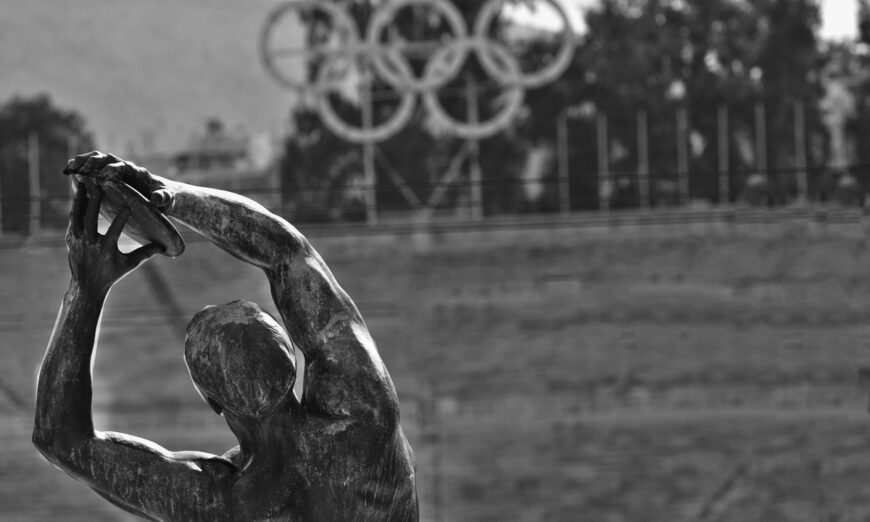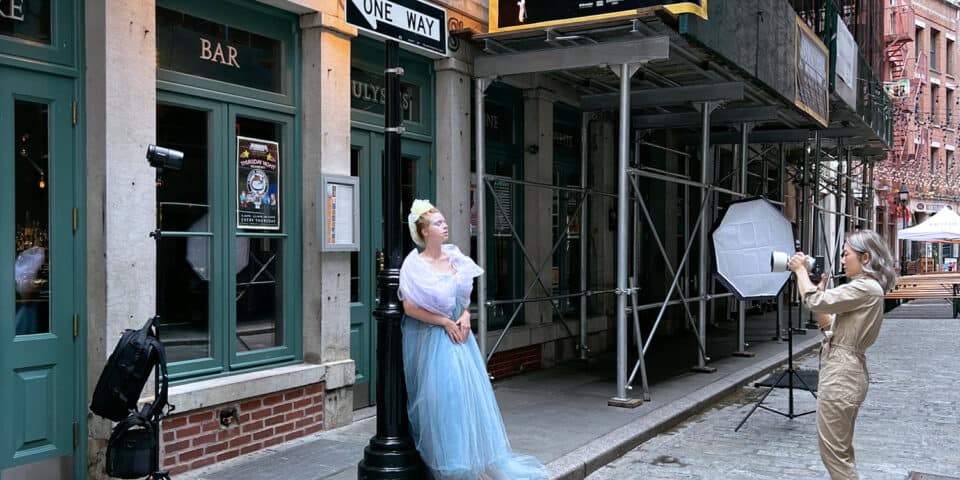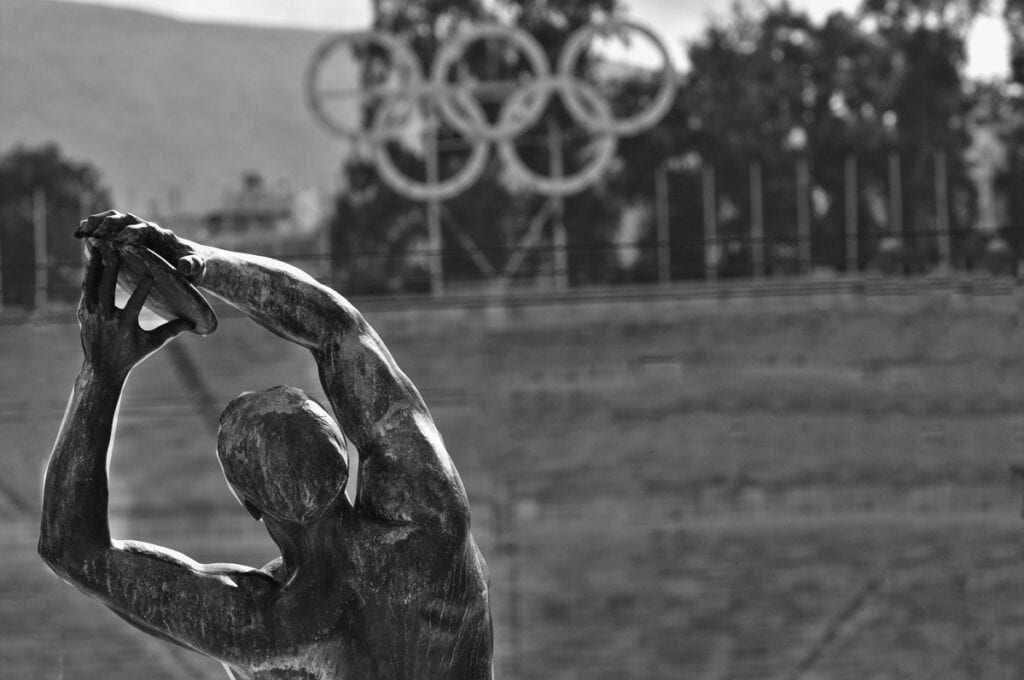
With the Olympics on the horizon and summer sports in full swing across Canada, we wanted to revisit some valuable tips and gear recommendations for Sports Photography from Sony Alpha Universe Photographer David Horn.
We hope you take inspiration from this and learn some great tricks to improve your live action sports photography skills! Dive into this inspiring blog from the Sony Alpha Universe:
What’s In my Bag: A Sony Alpha Sports Kit for Premier League Action
David Horn (@davehorn247) has been photographing professional sports since 2012. “I’m co-owner of sports and event agency, PRiME Media Images and I’m the club photographer for the football club I’ve supported for 45 years, Luton Town.
I was lucky enough to work with them on their promotion to the Premier League and their first season in the top flight. We’re also club photographers for Wycombe Wanderers football club and several professional Rugby clubs and supply a variety of images to UK and International press.”
We caught up with Horn to learn more about the kit he uses for fast on-the-field action. Keep reading as he shares what’s in his sports photography kit.
Product Preview – In This Article You’ll Find:
–Sony Alpha 1
–Sony Alpha 9 III
–Sony Alpha 9 II
–Sony 70-200mm f/2.8 G Master II
–Sony 400mm f/2.8 G Master
–Sony 70-200mm f/2.8 G Master
–Sony 24-70mm f/2.8 G Master II
–Sony 12-24mm f/2.8 G Master
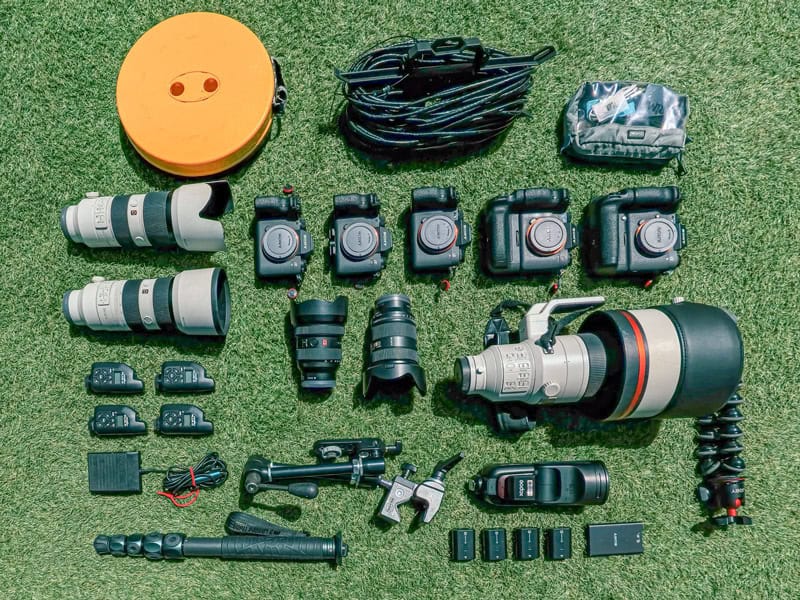
Cameras
Sony Alpha 1: I have two of these bodies, one gripped, and they are a game changer for me for a number of reasons. Firstly the high pixel count means I can crop in heavily without losing quality and so when paired with the Sony 400mm f/2.8 G Master lens, it’s like having a 600mm f/2.8 lens.
Secondly, the connectivity on this camera helps me get images to clubs live during the game for their social media feeds without even touching my laptop – I shoot, crop in camera and send via wifi or ethernet cable, depending on what’s available at the ground I’m shooting from.
Thirdly, the speed of this camera, both in focusing and the frames per second give me many more usable images and allows me to capture images I couldn’t get previously – giving me more options to select the best frame in an action sequence that suits the story or client.
Finally, I love the extent to which I can customize the camera and all the buttons, very easily switching between a whole set of different settings at the touch of a button. That’s useful for quickly capturing a slow speed pan, cropping in before shooting or switching between focusing modes. I normally have one of my Sony Alpha 1 bodies paired with my Sony 400mm f/2.8 G Master and the other with my Sony 24-70mm f/2.8 G Master II lens.
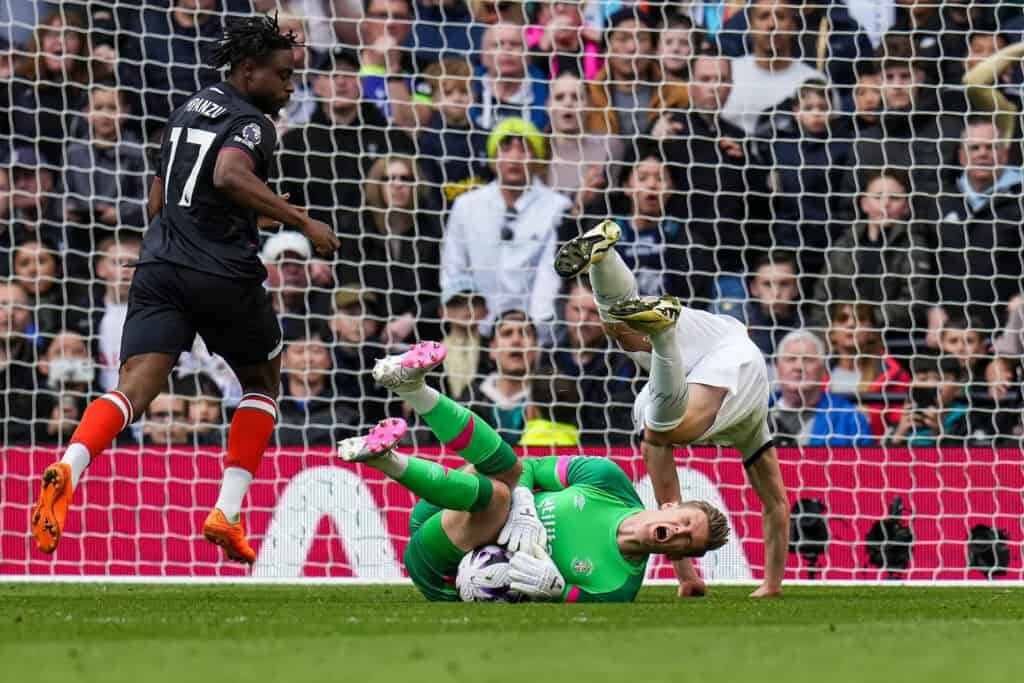
This image is a heavy crop of. aframe captured with the Sony Alpha 1 paired with Sony 400mm f/2.8 G Master lens. It shows the benefit of having the high pixel count on the body. Photo by David Horn. Sony Alpha 1. Sony 400mm f/2.8 G Master. 1/2000-sec., f/3.2, ISO 500
Sony Alpha 9 III: This is the most recent body to enter my kit bag and while it doesn’t offer the pixel count of the Sony Alpha 1 bodies, the focusing is quick and it provides a host of connectivity options. That said, the main advantage this body gives to me is the pre-capture feature. It took a few matches of fine tuning to get this set at the right interval, but there’s always going to be times when I’m pre-focussing and I’m not quite quick enough to fully press the shutter button when I see something happen in the viewfinder – The Alpha 9 III’s pre-caprture stores a few frames before I press the shutter, which has given me some images I’m sure I wouldn’t have got without it.
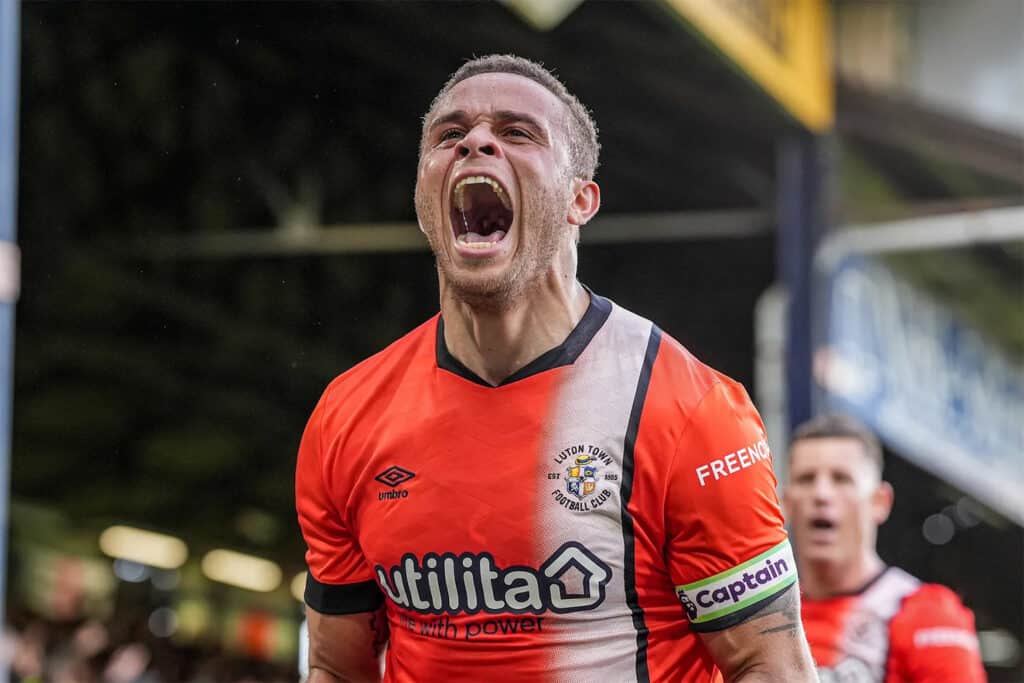
There’s nothing like a good celebration shot, showing passion and release of built up energy. This frame was shot at 115mm on the Sony 70-200mm f/2.8 G Master II paired with the Sony Alpha 9 III with the eye-tracking autofocus locking on well. Photo by David Horn. Sony Alpha 9 III. Sony 70-200mm f/2.8 G Master II. 1/2500-sec., f/3.5, ISO 2500
Sony Alpha 9 II: I have two of these bodies which were the first bodies I had after switching across to Sony when the bigger sports lenses became available. My pair of Alpha 9 II bodies remain more than capable and I now use them as remote cameras, one paired with a wide lens setup behind the goal and another setup high in the stadium with the Sony 70-200mm f/2.8 G Master lens, both triggered with PocketWizards, directly from my other bodies and/or from a foot pedal.
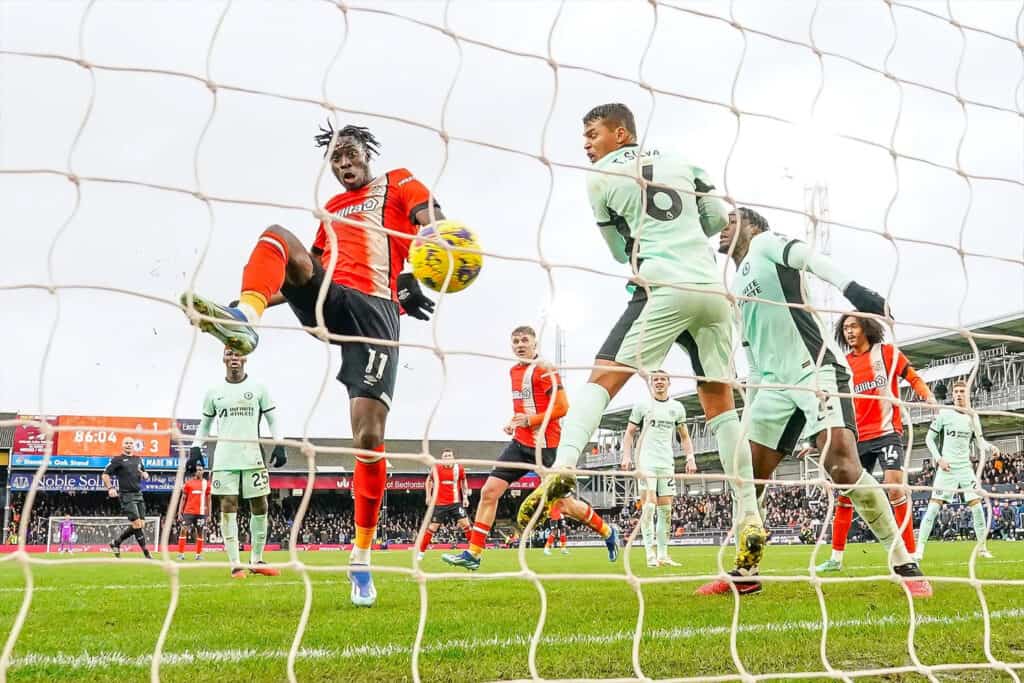
Elijah Adebayo scores during the Premier League match between Luton Town and Chelsea at Kenilworth Road, Luton, England on 30 December 2023. Captured with the Sony Alpha 9 II, remotely fired. Photo by David Horn. Sony Alpha 9 II. 1/800-sec., f/5, ISO 3200
Lenses
Sony 70-200mm f/2.8 G Master II: If I could only have one lens, this would be it. It’s sharp and gives a versatile focal length. It’s what I consider to be my ‘money shot’ lens. Key images when shooting football are the player scoring a goal and then celebrating the goal and most of those images that I’ve taken, and have had published in national and international publications, are with the Sony 70-200mm f/2.8 G Master II. I have the 70-200mm paired with my Sony Alpha 9 III primarily because of the focusing speed accuracy of both together, and the pre-focusing option on the body (I tend not to need to crop much into these images). I also use it with the Sony Alpha 1.
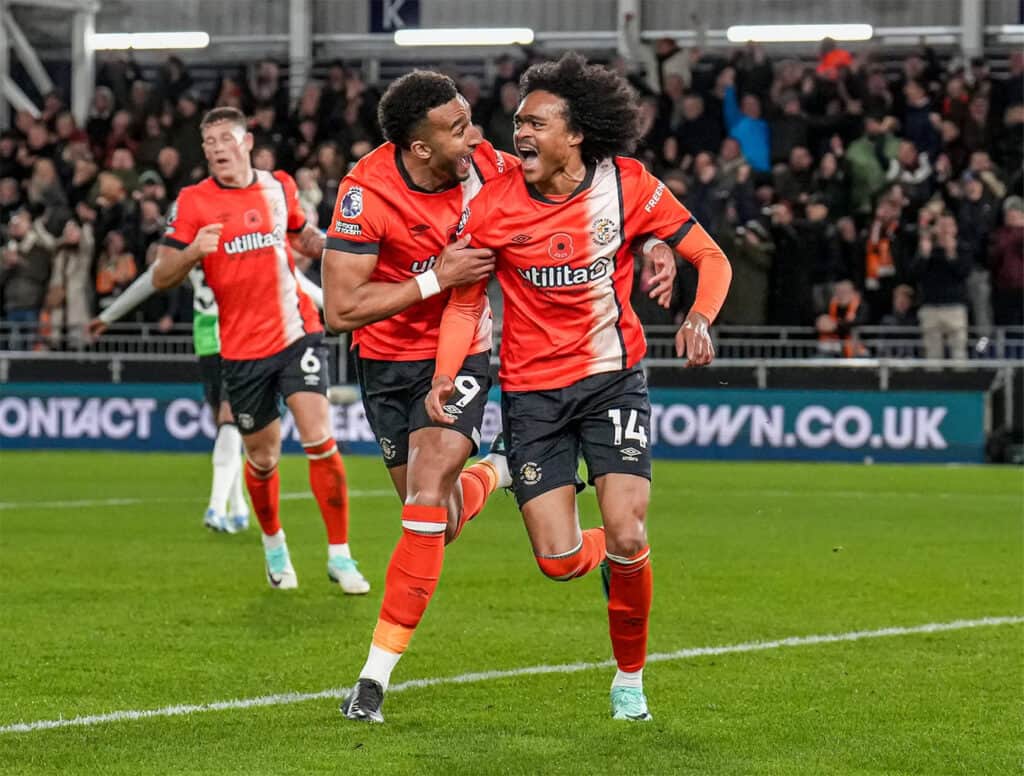
A celebration of Luton Town Football Club’s goal of the season – a fast break against Liverpool at home ending in Tahith Chong (right) putting the home team up 1-0. A frame from this sequence was also used on the from page of The Times football supplement, The Game. Photo by David Horn. Sony Alpha 1. Sony 70-200mm f/2.8 G Master II. 1/1600-sec., f/3.5, ISO 5000
Sony 400mm f/2.8 G Master: I’m normally sitting close to the goal line of the team I’m working for and so this lens is essential for being able to capture images when the action is on the opposite end of the pitch and also to capture close up portrait style images. The f/2.8 aperture is essential for night games for keeping the shutter speed high enough to capture fast moving action and throwing the background out of focus to make the subject of the image pop. When paired the Sony Alpha 1, it really comes into its own and opens up a lot of opportunities with the cropping ability.
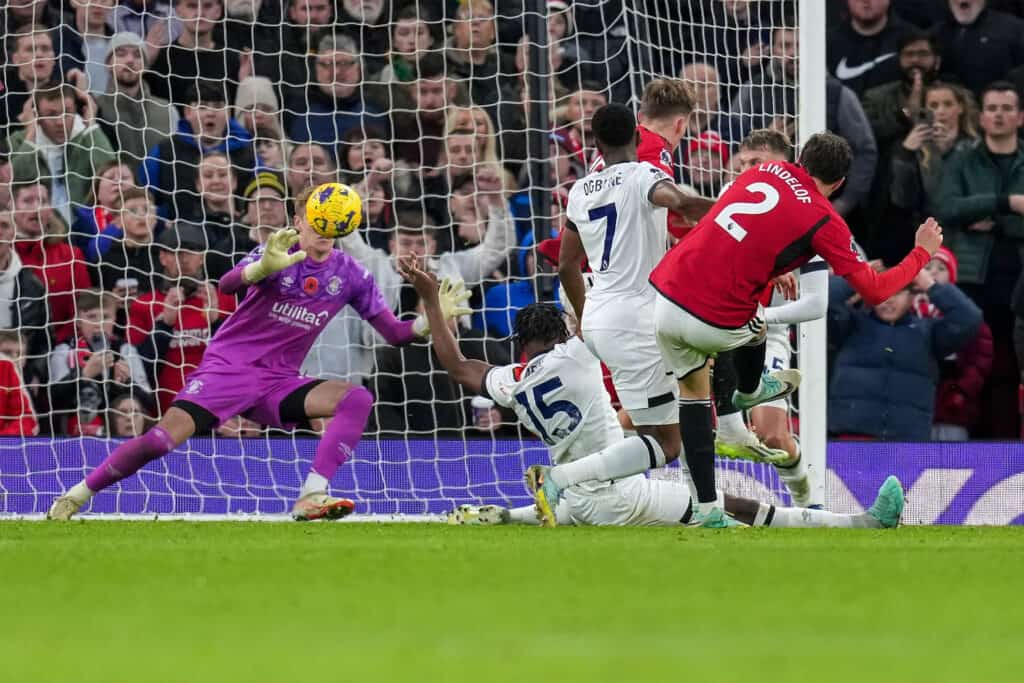
This image of Lindelof of Manchester United scoring the only goal of Luton’s match at Old Trafford, taken on the Sony Alpha 1 and Sony 400mm f/2.8 G Master lens, was published in the UK’s Sunday Telegraph. Photo by David Horn. Sony Alpha 1. Sony 400mm f/2.8 G Master. 1/1600-sec., f/3.2, ISO 2000
Sony 70-200mm f/2.8 G Master: When upgrading to the GM II version of this lens, I started to use my first gen 70-200mm f/2.8 G Master on a remote camera to get a different angle. The lens pairs nicely with the Sony Alpha 9 II.
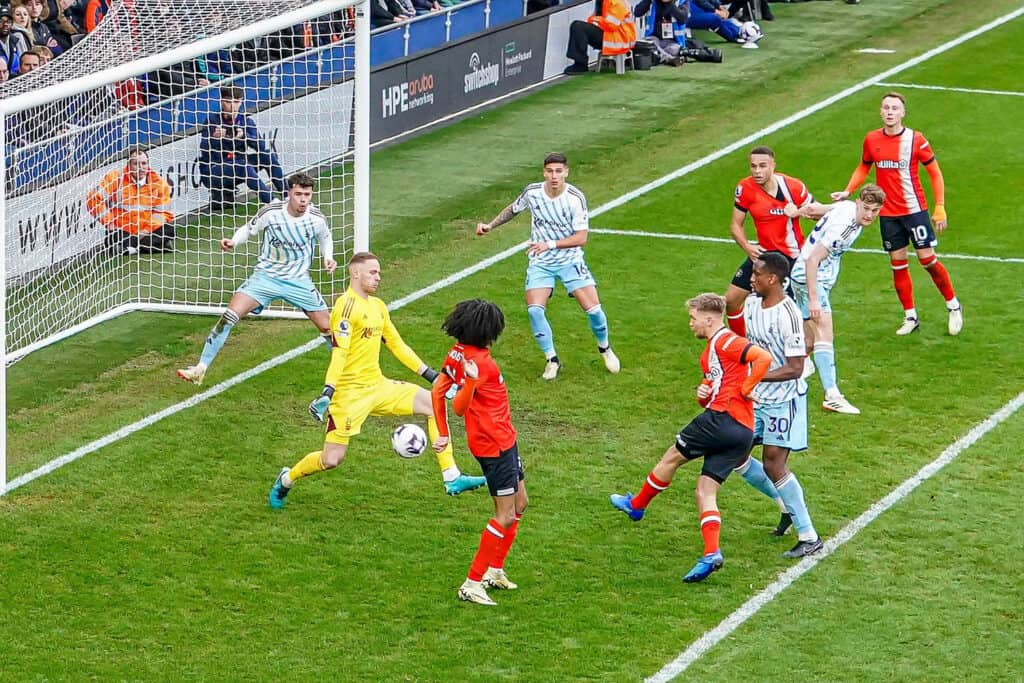
This was the player’s first Premier League goal and I was sitting in the top right of this image and so completely blocked by players to get a frame. Having a remote camera setup with the Sony 70-200mm f/2.8 G Master allowed me to capture this piece of the club’s and player’s history. Photo by David Horn. Sony Alpha 9 II. Sony 70-200mm f/2.8 G Master. 1/1000-sec., f/5, ISO 3200
Sony 24-70mm f/2.8 G Master II: This lens gets a lot of use and is such a great general purpose lens. On a home match day I use it to capture images of match day mascots warming up and also the man of the match award photos in the corporate hospitality suite after a match. It’s also the lens I use for team and individual photos at the start of the season and for new signings.
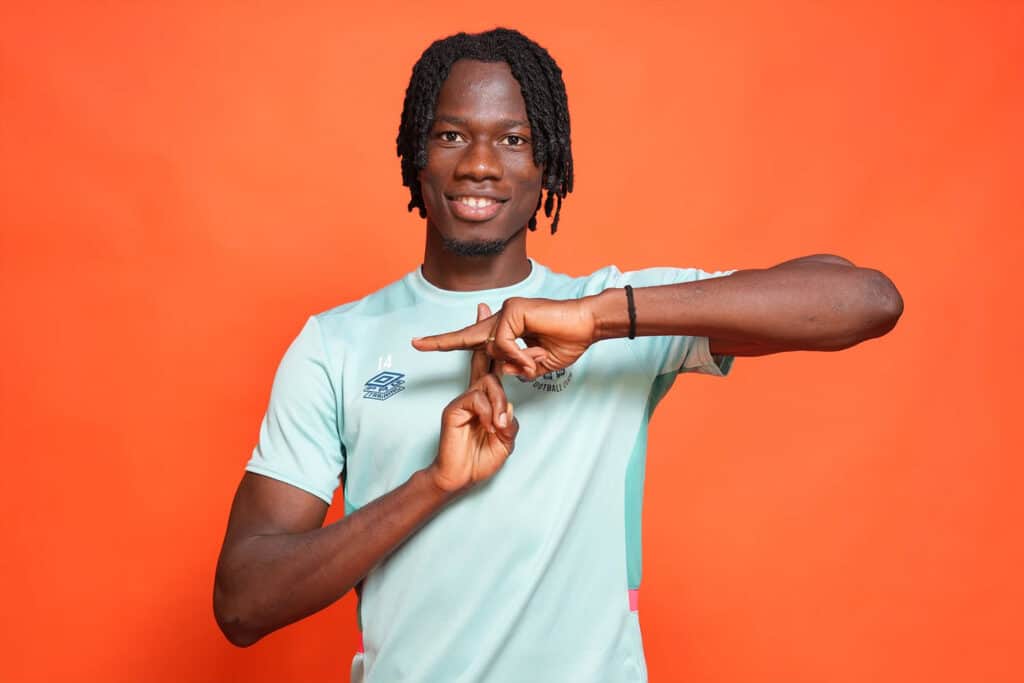
In a new player signing photo, Issa Kabore, on loan from Manchester City, shows his enthusiasm to be playing for Luton Town. This image was shot with the Sony 24-70mm f/2.8 G Master II lens at 40mm with one off camera flash in a soft box. Photo by David Horn. Sony Alpha 1. Sony 24-70mm f/2.8 G Master II. 1/160-sec., f/4, ISO 400
Sony 12-24mm f/2.8 G Master: This is my least used lens but it’s essential when I need it! I use the 12-24mm f/2.8 G Master for stadium general views to get across the sense of scale and inside changing rooms where room is tight.
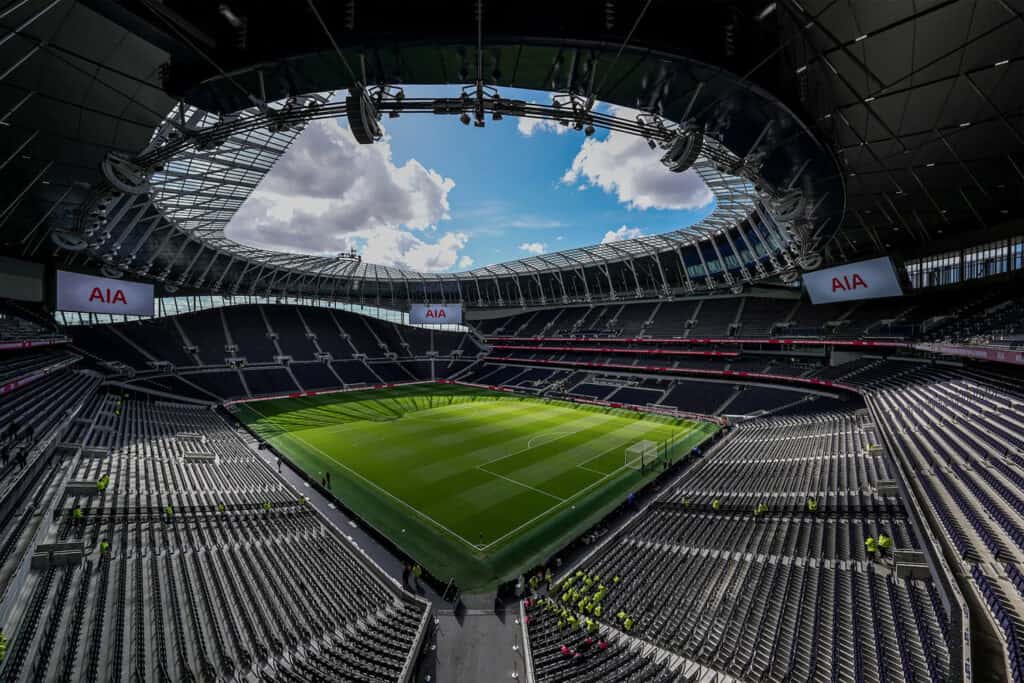
Accessories
Remote Shooting: To assist in remote shooting, Pocket Wizards allow me to have two remote cameras set up and to be used independently, with a foot pedal to release one set. I have two methods of setting up the remotes, one on a Joby GorillaPod behind the goal and a Manfrotto Superclamp for securing the remote camera elsewhere, such as in the press gantry for a high up perspective at Kenilworth Road.
Sony CFExpress Type A / SD Card Reader: An essential accessory to get images from camera to laptop, fast.
Monopod: After trying several monopods to use with my Sony 400mm f/2.8 G Master lens, I’ve settled on the 3Legged Thing Alan 2.0 Professional Carbon Fibre Monopod. It’s robust but light and folds down very small with twist grips to extend and contract.
Stool: I use an original collapsible stool and have used this for many years now. There are a number of non-original versions on the market now but I’ve seen a number of these collapse mid game! This type of stool allows the height to be easily adjusted to account for different size advertising boards, etc.
Ethernet Cable: A long Ethernet cable allows me to connect my laptop and cameras to the internet for the transmission of images, either through a direct connection or a battery powered router or splitter.
Miscellaneous Cables: I always have a small pouch of spare cables, connectors and small gadgets like wireless routers, ethernet splitters etc.
Spare Batteries: I can easily go through a battery during a match and so I always carry with me at least four spare batteries.
Bags (not pictured): My two primary bags are a Think Tank Glass Limo, which houses my Sony 400mm f/2.8 G Master lens with gripped body attached and a Think Tank Airport roller bag that houses most of my other equipment plus several Think Tank pouches that attach to my Glass Limo bag and a messenger bad for my longer lens remote camera setup.
See more of David Horn’s work on Instagram @davehorn247.
